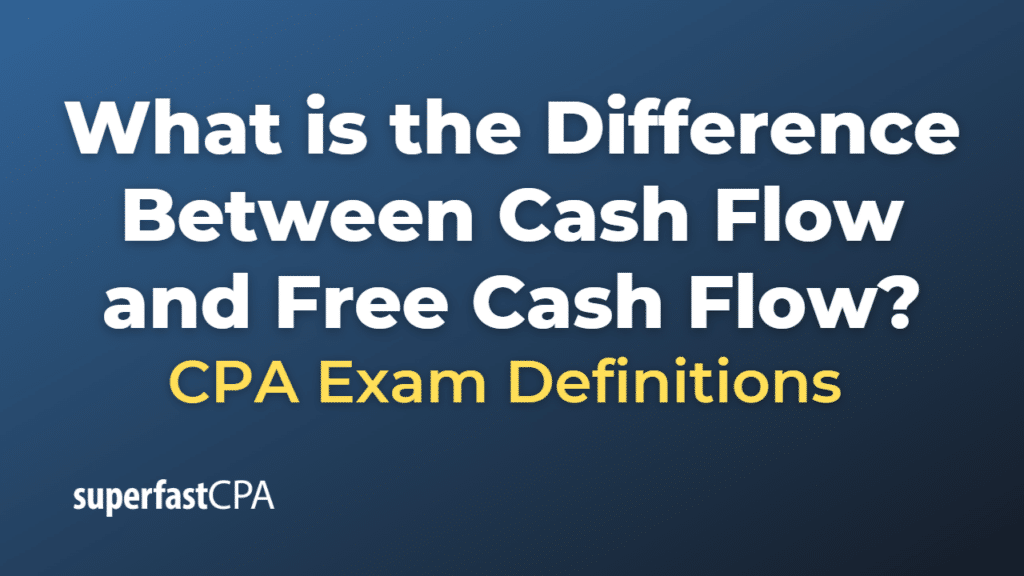Difference Between Cash Flow and Free Cash Flow
Cash Flow and Free Cash Flow are two financial metrics that provide insight into a company’s liquidity and financial health. They focus on different aspects of the company’s cash movements:
- Cash Flow: In its broadest sense, cash flow refers to the total amount of money being transferred into and out of a business. However, in a more specific context, when people refer to “cash flow”, they often mean “net cash flow”, which is calculated as cash inflows minus cash outflows during a given period. It’s often categorized into cash flow from operating activities (the primary business activities), investing activities (purchases and sales of assets, investments), and financing activities (issuing or repaying debt and equity).
- Free Cash Flow (FCF): Free Cash Flow is a more specific measure of a company’s financial performance and represents the cash that a company is able to generate after spending the money required to maintain or expand its asset base. It’s typically calculated as cash flow from operating activities minus capital expenditures. FCF is an important measure because it shows how much cash a company has available for shareholders after all its expenses, reinvestments, and growth needs are accounted for.
In summary, while cash flow can provide a picture of a company’s overall cash inflows and outflows, Free Cash Flow provides a clearer view of the company’s cash-generating ability and its available cash for potential investment, debt repayment, dividends, or other uses.
Example of the Difference Between Cash Flow and Free Cash Flow
let’s use a hypothetical example of a company, “TechGiant Ltd.”
Cash Flow:
In the fiscal year 2023, TechGiant had the following cash flows:
- Cash inflows from operating activities (such as sales revenue): $1,000,000
- Cash outflows from operating activities (such as wages, rent, and other operating expenses): $600,000
- Cash outflows from investing activities (such as purchasing new equipment): $200,000
- Cash inflows from financing activities (such as issuing new shares): $100,000
- Cash outflows from financing activities (such as repaying a portion of a loan): $50,000
To calculate the net cash flow for the year, we add up all the cash inflows and subtract all the cash outflows: ($1,000,000 – $600,000) + (-$200,000) + ($100,000 – $50,000) = $250,000.
So, TechGiant’s net cash flow for the year is $250,000.
Free Cash Flow (FCF):
Free Cash Flow is calculated as cash flow from operating activities minus capital expenditures. From the above, we know that TechGiant’s cash inflows from operating activities were $1,000,000 and cash outflows from operating activities were $600,000. Thus, the net cash provided by operating activities was $400,000 ($1,000,000 – $600,000).
If TechGiant’s capital expenditures (money spent on purchasing or upgrading physical assets like equipment or property) were $200,000, then the Free Cash Flow would be $400,000 – $200,000 = $200,000.
So, TechGiant’s Free Cash Flow for the year is $200,000.
In this example, TechGiant’s net cash flow is higher than its Free Cash Flow because net cash flow includes cash from all sources and uses (including financing activities), while Free Cash Flow focuses on cash generated from operations after accounting for capital expenditures.













